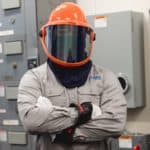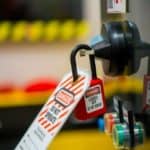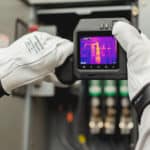To protect employees from electrical-related injuries, the National Fire Protection Association (NFPA) has developed the Standard for Electrical Safety in the Workplace® known as NFPA 70E®. Organizations that provide NFPA 70E employee training for handling and managing electrical assets can help prevent incidents, improve safety, and positively impact their bottom line. Here are a few training considerations to ensure NFPA 70E training is successful at your organization.
The Keys to Successful NFPA 70E® Training
- Consider the changing workforce – Older generations of workers carry a bevy of knowledge in managing electrical hazards, which was gathered over years of working on the job. Take this into consideration when training younger generations. They will need training that goes beyond by-the-book instruction, including personal anecdotes and stories, close call encounters, and case studies. If possible, have these employees shadow the employees with decades of experience that live and breathe safety.
- Understand the causes of arc flashes – You cannot train on how to manage hazards without understanding how they happen and their causes. Usually, an arc flash happens when either equipment has failed or there is a physical interaction with an energized piece of equipment, such as removing a panel and working with a circuit breaker. Some causes can include human error, failing to use insulated tools, excessive dust, corrosion, and improperly maintained or installed switches and circuit breakers.
- Identify the equipment with arc flash potential – It is also important to recognize the types of equipment that have arc flash potential. Safety issues are raised whenever personnel work with an overcurrent protective device, such as circuit breakers or fuses. These devices protect against the potentially dangerous effects of an overcurrent, such as an overload current or a short-circuit current, which creates a fault current. To determine and confirm arc flash potential, an assessment or arc flash hazard analysis should be performed on equipment 50V or higher.
- Know how to apply and read arc flash labels – Labeling is required by NFPA 70E for any piece of electrical equipment that may need examination, adjustment, service or maintenance while energized, creating the potential for an arc flash incident to occur. Electrical workers need to understand how hazards affect those who are performing diagnostics (or the regular tasks at hand), know how to apply labels, and how to read data on those labels.
- Conduct an arc flash assessment to determine hazards– An arc flash risk assessment is a process to determine the level of hazard that exists at each electrical enclosure, such as a control panel, panel board, disconnect switch, or switchgear. 70E training offers guidance on how to perform an assessment. However, if an organization does not have the resources available or knowledgeable in conducting an assessment, outside providers like SEAM Group can help.
Protect Your Employees, Assets, and Bottom-line with the Proper Arc Flash Training
NFPA 70E training is critical for your electrical workers to handle energized assets safely. There are many pieces of training available to your organization, but know that learning procedures by-the-book will only get your employees so far. The proper training involves obtaining knowledge and guidance from experts in managing electrical assets and hazard mitigation. Experts with diverse electrical backgrounds will balance textbook training with real-life scenarios for an optimal learning experience.
To learn more about providing NFPA 70E training or an arc flash hazard assessment for your organization, see our complete list of training offerings or contact SEAM Group and get started today!





